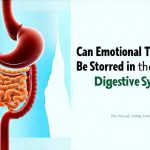Trauma, whether physical injury, chronic illness, intense emotional stress, or significant life disruption, profoundly impacts our bodies on multiple levels. Often overlooked in conventional recovery models is the critical role played by the microbiome – the vast community of microorganisms living within us. These bacteria, fungi, viruses, and other microbes aren’t merely passengers; they are active participants in nearly every physiological process, from digestion and immunity to mental health and neurological function. When trauma occurs, this intricate ecosystem can be severely disrupted, leading to a state of dysbiosis, where the balance is thrown off, potentially exacerbating recovery challenges and increasing vulnerability to secondary complications. Understanding how to support microbiome regeneration is therefore not just about gut health; it’s about fundamentally supporting the body’s inherent healing capacity.
The relationship between trauma and the microbiome is bidirectional. Trauma can directly alter the microbiome through factors like antibiotic use (common in injury treatment), stress-induced changes in digestive function, and altered dietary habits during periods of difficulty. Conversely, a compromised microbiome can worsen the effects of trauma by weakening immune defenses, increasing inflammation, impairing nutrient absorption, and even influencing mood and cognitive function. Rebuilding this microbial community is a long game, requiring consistent effort and holistic strategies that address multiple facets of lifestyle. It’s less about quick fixes and more about cultivating an internal environment where beneficial microbes can thrive and resilience can flourish. This article will explore practical approaches to nurture microbiome regeneration following trauma or illness, focusing on diet, stress management, and mindful living.
Dietary Strategies for Microbiome Regeneration
Diet is arguably the most potent lever we have in influencing our microbiome composition. Following a traumatic event or period of illness, the digestive system often struggles, making careful food choices paramount. The goal isn’t restriction but rather nourishment – providing the building blocks for microbial diversity and function. This begins with prioritizing whole, unprocessed foods rich in fiber and phytonutrients.
- Focus on prebiotic foods: These are essentially food for your gut bacteria. Examples include garlic, onions, leeks, asparagus, bananas (slightly green), oats, and apples. They feed the beneficial microbes, helping them to proliferate.
- Incorporate probiotic-rich fermented foods: Think yogurt (unsweetened, with live cultures), kefir, sauerkraut, kimchi, kombucha (low sugar), and miso. These introduce live microorganisms directly into your gut. However, it’s crucial to remember that probiotics are not a one-size-fits-all solution; different strains have different effects, and the benefits depend on individual microbiome composition.
- Reduce intake of processed foods, refined sugars, and artificial sweeteners: These can negatively impact microbial diversity and promote the growth of harmful bacteria. They also contribute to inflammation, hindering healing processes.
Beyond specific food choices, mindful eating is essential. This means paying attention to how your body responds to different foods, chewing thoroughly, and creating a relaxed environment during mealtimes. Stress impairs digestion, so taking time to savor meals without distraction can significantly improve nutrient absorption and microbial balance. It’s also important to consider individual sensitivities. Food intolerances or allergies can further disrupt the microbiome, so identifying and eliminating trigger foods may be necessary. A phased approach to reintroducing foods after a period of digestive upset is often beneficial, starting with easily digestible options and gradually expanding as tolerance improves.
Stress Management & The Gut-Brain Connection
The gut and brain are intimately connected via what’s known as the gut-brain axis. This bidirectional communication pathway means that stress significantly impacts gut health, and vice versa. Trauma frequently triggers a chronic stress response, leading to elevated cortisol levels which can disrupt the microbiome, decrease digestive function, and compromise immune defenses. Managing stress is therefore not just about mental wellbeing; it’s directly linked to microbiome regeneration.
Chronic activation of the sympathetic nervous system (the “fight-or-flight” response) diverts energy away from digestion and towards survival mode. This leads to reduced gut motility, altered microbial balance, and increased intestinal permeability (“leaky gut”), allowing undigested food particles and toxins to enter the bloodstream, triggering inflammation. Conversely, activating the parasympathetic nervous system (the “rest-and-digest” response) promotes relaxation, enhances digestion, and supports microbiome health.
Techniques for stress management should be integrated into daily life:
* Mindfulness meditation: Regular practice can reduce cortisol levels and promote a sense of calm.
* Deep breathing exercises: These activate the parasympathetic nervous system, counteracting the effects of stress.
* Yoga or Tai Chi: Gentle movement combined with mindful breathing helps to release tension and improve gut motility.
* Spending time in nature: Studies show that exposure to natural environments reduces stress hormones and enhances wellbeing.
* Social connection: Strong social support networks buffer against the negative impacts of stress.
Cultivating a Lifestyle of Microbial Diversity
Beyond diet and stress management, several lifestyle factors play a crucial role in supporting microbiome regeneration. Environmental exposures, for example, can significantly impact microbial diversity. Spending time outdoors exposes us to a wider range of microorganisms, enriching our own internal ecosystem. However, excessive hygiene and overuse of antibacterial products can inadvertently reduce this exposure, leading to a less diverse microbiome.
- Embrace “dirt”: Allowing children (and adults!) to play in the dirt, within reasonable safety limits, is thought to be beneficial for immune development and microbial diversity.
- Limit antibiotic use: Antibiotics are life-saving medications when necessary but can also indiscriminately kill both harmful and beneficial bacteria. Use them only when prescribed by a healthcare professional and consider probiotic supplementation during and after antibiotic treatment (under guidance).
- Prioritize sleep: Adequate, restorative sleep is essential for overall health, including gut health. Sleep deprivation disrupts the microbiome and increases inflammation.
Movement & Gut Motility
Physical activity isn’t just beneficial for cardiovascular health; it also positively impacts gut motility and microbial diversity. Regular exercise promotes peristalsis (the wave-like contractions that move food through the digestive tract), preventing constipation and supporting healthy bowel movements.
- Aim for at least 30 minutes of moderate-intensity exercise most days of the week.
- Incorporate a variety of movement types, including walking, running, swimming, yoga, or dancing.
- Avoid prolonged periods of sitting: Sedentary behavior slows down digestion and can contribute to gut dysbiosis.
Crucially, avoid overly strenuous exercise during initial recovery phases. The body needs time to heal, and excessive exertion can further stress the system. Gentle movement is preferable. A gradual increase in activity levels as strength and stamina return is key. Furthermore, hydration is vital for optimal gut function, supporting motility and nutrient absorption. Is nausea after exercise normal or a sign of concern?
Hydration & Toxicant Avoidance
Adequate hydration is fundamental to all bodily functions, including digestion and microbiome health. Water helps to move food through the digestive tract, supports nutrient absorption, and prevents constipation. Aim for at least 8 glasses of water per day, adjusting based on activity level and climate. Beyond water intake, minimizing exposure to environmental toxicants is crucial. These can disrupt the microbiome and compromise immune function.
- Filter your water: Remove chlorine, heavy metals, and other contaminants.
- Choose organic foods whenever possible: Reduce exposure to pesticides and herbicides.
- Use natural cleaning products: Avoid harsh chemicals that can harm gut bacteria.
- Limit exposure to plastics: BPA and phthalates are endocrine disruptors that can negatively impact the microbiome.
Regenerating the microbiome after trauma or illness is a journey, not a destination. It requires consistent effort, mindful choices, and a holistic approach that addresses all aspects of lifestyle. By prioritizing diet, stress management, movement, hydration, and toxicant avoidance, we can create an internal environment where beneficial microbes thrive, supporting resilience, healing, and long-term wellbeing. Remember to consult with healthcare professionals for personalized guidance tailored to your specific needs and circumstances. If you are recovering from illness, consider developing a post-recovery diet. And if experiencing issues related to food poisoning or stomach flu, explore building a recovery plan. For those struggling with digestive imbalances, restoring digestive balance is essential for overall health. Lastly, understanding delayed food reactions can help pinpoint the source of digestive issues.


















